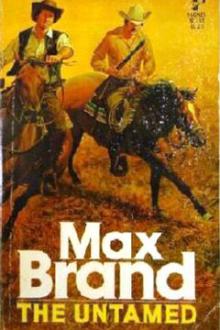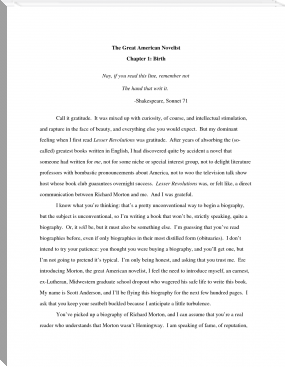Kenilworth, Walter Scott [children's books read aloud txt] 📗

- Author: Walter Scott
Book online «Kenilworth, Walter Scott [children's books read aloud txt] 📗». Author Walter Scott
On this occasion, as at different times during the evening, Raleigh addressed himself to Tressilian, and was not a little surprised at his vague and unsatisfactory answers; which, joined to his leaving his apartment without any assigned reason, appearing in an undress when it was likely to be offensive to the Queen, and some other symptoms of irregularity which he thought he discovered, led him to doubt whether his friend did not labour under some temporary derangement.
Meanwhile, the Queen had no sooner stepped on the bridge than a new spectacle was provided; for as soon as the music gave signal that she was so far advanced, a raft, so disposed as to resemble a small floating island, illuminated by a great variety of torches, and surrounded by floating pageants formed to represent sea-horses, on which sat Tritons, Nereids, and other fabulous deities of the seas and rivers, made its appearance upon the lake, and issuing from behind a small heronry where it had been concealed, floated gently towards the farther end of the bridge.
On the islet appeared a beautiful woman, clad in a watchet-coloured silken mantle, bound with a broad girdle inscribed with characters like the phylacteries of the Hebrews. Her feet and arms were bare, but her wrists and ankles were adorned with gold bracelets of uncommon size. Amidst her long, silky black hair she wore a crown or chaplet of artificial mistletoe, and bore in her hand a rod of ebony tipped with silver. Two Nymphs attended on her, dressed in the same antique and mystical guise.
The pageant was so well managed that this Lady of the Floating Island, having performed her voyage with much picturesque effect, landed at Mortimer's Tower with her two attendants just as Elizabeth presented herself before that outwork. The stranger then, in a well-penned speech, announced herself as that famous Lady of the Lake renowned in the stories of King Arthur, who had nursed the youth of the redoubted Sir Lancelot, and whose beauty 'had proved too powerful both for the wisdom and the spells of the mighty Merlin. Since that early period she had remained possessed of her crystal dominions, she said, despite the various men of fame and might by whom Kenilworth had been successively tenanted. 'The Saxons, the Danes, the Normans, the Saintlowes, the Clintons, the Montforts, the Mortimers, the Plantagenets, great though they were in arms and magnificence, had never, she said, caused her to raise her head from the waters which hid her crystal palace. But a greater than all these great names had now appeared, and she came in homage and duty to welcome the peerless Elizabeth to all sport which the Castle and its environs, which lake or land, could afford.
The Queen received this address also with great courtesy, and made answer in raillery, “We thought this lake had belonged to our own dominions, fair dame; but since so famed a lady claims it for hers, we will be glad at some other time to have further communing with you touching our joint interests.”
With this gracious answer the Lady of the Lake vanished, and Arion, who was amongst the maritime deities, appeared upon his dolphin. But Lambourne, who had taken upon him the part in the absence of Wayland, being chilled with remaining immersed in an element to which he was not friendly, having never got his speech by heart, and not having, like the porter, the advantage of a prompter, paid it off with impudence, tearing off his vizard, and swearing, “Cogs bones! he was none of Arion or Orion either, but honest Mike Lambourne, that had been drinking her Majesty's health from morning till midnight, and was come to bid her heartily welcome to Kenilworth Castle.”
This unpremeditated buffoonery answered the purpose probably better than the set speech would have done. The Queen laughed heartily, and swore (in her turn) that he had made the best speech she had heard that day. Lambourne, who instantly saw his jest had saved his bones, jumped on shore, gave his dolphin a kick, and declared he would never meddle with fish again, except at dinner.
At the same time that the Queen was about to enter the Castle, that memorable discharge of fireworks by water and land took place, which Master Laneham, formerly introduced to the reader, has strained all his eloquence to describe.
“Such,” says the Clerk of the Council-chamber door “was the blaze of burning darts, the gleams of stars coruscant, the streams and hail of fiery sparks, lightnings of wildfire, and flight-shot of thunderbolts, with continuance, terror, and vehemency, that the heavens thundered, the waters surged, and the earth shook; and for my part, hardy as I am, it made me very vengeably afraid.”
[See Laneham's Account of the Queen's Entertainment at Killingworth Castle, in 1575, a very diverting tract, written by as great a coxcomb as ever blotted paper. [See Note 6] The original is extremely rare, but it has been twice reprinted; once in Mr. Nichols's very curious and interesting collection of the Progresses and Public Processions of Queen Elizabeth, vol.i. and more lately in a beautiful antiquarian publication, termed KENILWORTH ILLUSTRATED, printed at Chiswick, for Meridew of Coventry and Radcliffe of Birmingham. It contains reprints of Laneham's Letter, Gascoigne's Princely Progress, and other scarce pieces, annotated with accuracy and ability. The author takes the liberty to refer to this work as his authority for the account of the festivities.
I am indebted for a curious ground-plan of the Castle of Kenilworth, as it existed in Queen Elizabeth's time, to the voluntary kindness of Richard Badnall Esq. of Olivebank, near Liverpool. From his obliging communication, I learn that the original sketch was found among the manuscripts of the celebrated J. J. Rousseau, when he left England. These were entrusted by the philosopher to the care of his friend Mr. Davenport, and passed from his legatee into the possession of Mr. Badnall.]
CHAPTER XXXI. Nay, this is matter for the month of March, When hares are maddest. Either speak in reason, Giving cold argument the wall of passion, Or I break up the court. —BEAUMONT AND FLETCHER.
It is by no means our purpose to detail minutely all the princely festivities of Kenilworth, after the fashion of Master Robert Laneham, whom we quoted in the conclusion of the last chapter. It is sufficient to say that under discharge of the splendid fireworks, which we have borrowed Laneham's eloquence to describe, the Queen entered the base-court of Kenilworth, through Mortimer's Tower, and moving on through pageants of heathen gods and heroes of antiquity, who offered gifts and compliments on the bended knee, at length found her way to the Great Hall of the Castle, gorgeously hung for her reception with the richest silken tapestry, misty with perfumes, and sounding to strains of soft and delicious music. From the highly-carved oaken roof hung a superb chandelier of gilt bronze, formed like a spread eagle, whose outstretched wings supported three male and three female figures, grasping a pair of branches in each hand. The Hall was thus illuminated by twenty-four torches of wax. At the upper end of the splendid apartment was a state canopy, overshadowing a royal throne, and beside it was a door, which opened to a long suite of apartments, decorated with the utmost magnificence for the Queen and her ladies, whenever it should be her pleasure to be private.





Comments (0)